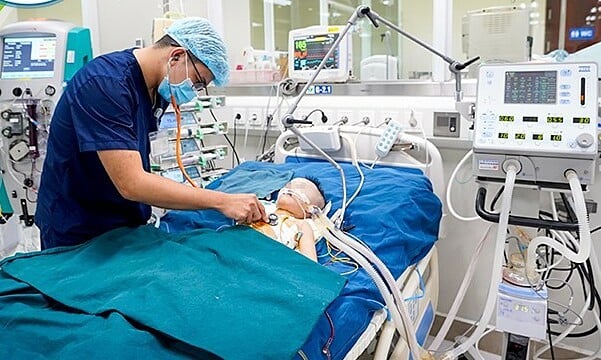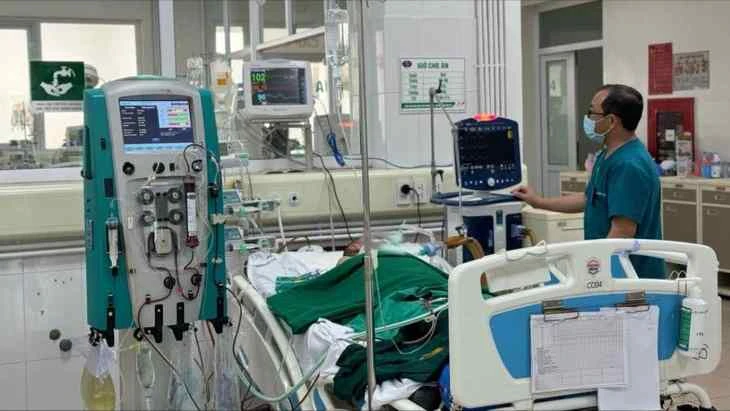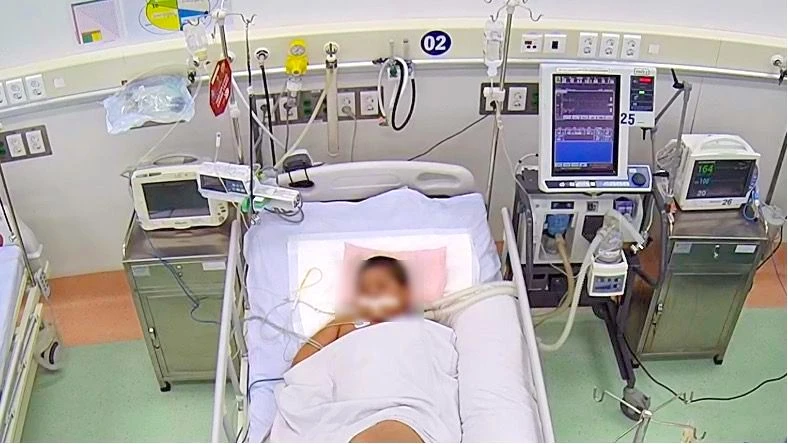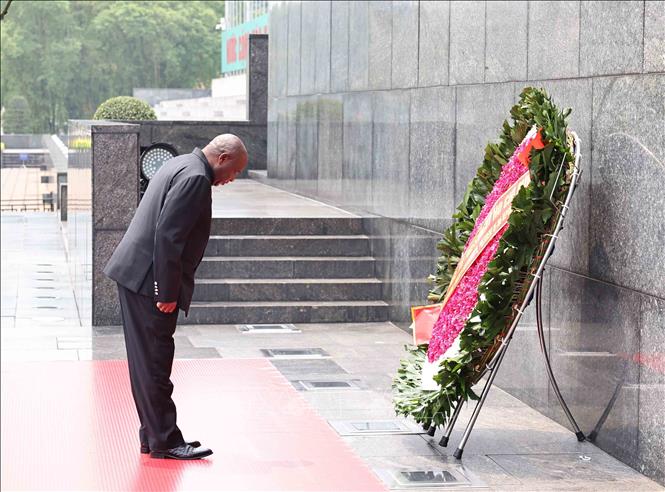Sepsis in children is a severe systemic infection - poisoning, occurring when the body's immune system overreacts to a bacterial agent causing multiple organ failure, which can lead to death.
On September 17, Dr. Chu Thanh Son, Department of Internal Medicine Intensive Care, National Children's Hospital, said that microbial agents include bacteria, viruses, parasites, and fungi. Symptoms include: slurred speech or confusion; muscle tremors or muscle pain, fever; no urine; difficulty breathing; fatigue, exhaustion; pale or purple skin.
This is an emergency condition, and the outcome of treatment depends on how quickly the child is detected and treated. If you suspect or confirm that your child has an infection and the above symptoms appear, you should take your child to a medical facility immediately for examination and timely treatment.
It is difficult for parents to recognize sepsis early in their children, because the symptoms are also common in benign fever diseases. However, sepsis progresses rapidly and can lead to more serious complications if not treated promptly.
"Cases that respond well can recover after 7-14 days, but if detected and treated late, the child may die or suffer lifelong sequelae," said Dr. Son.
The cause of sepsis can be viruses, bacteria, fungi and parasites. Therefore, doctors diagnose it by blood culture tests, rapid antigen test, gene amplification test, and at the same time look for the source of infection such as pneumonia, skin and soft tissue infection, urinary tract infection.

A child with sepsis is treated at the National Children's Hospital. Photo: Tran Viet
Septic shock
Dr. Le Nhat Cuong, Department of Internal Medicine Intensive Care, National Children's Hospital, said that septic shock is a common medical condition, many patients are admitted to the hospital in very critical condition. If not detected and treated promptly, the disease will progress to multiple organ failure (liver, kidney, blood clotting disorder).
Treatment of septic shock is mainly early detection, timely use of antibiotics, respiratory resuscitation with mechanical ventilation support, circulatory resuscitation with vasopressors and cardiac support. In addition, some active support measures such as continuous blood filtration support patients with kidney failure, use of artificial heart and lung (ECMO) for patients with severe respiratory failure, circulatory failure that does not respond to the use of vasopressors.
There have been many advances in resuscitation treatment, but septic shock remains a major disease burden and a high mortality rate. It is estimated that each year, approximately 20 million children (under 5 years old) worldwide suffer from sepsis and 3 million of them die.
Le Nga
Source link


![[Photo] President Luong Cuong presides over the official welcoming ceremony for Burundian President Évariste Ndayishimiye](https://vstatic.vietnam.vn/vietnam/resource/IMAGE/2025/4/4/63ceadc486ff4138abe2e88e93c81c91)
![[Photo] Prime Minister Pham Minh Chinh meets with President of the Republic of Burundi Evariste Ndayishimiye](https://vstatic.vietnam.vn/vietnam/resource/IMAGE/2025/4/4/979010f4c7634f6a82b8e01821170586)
![[Photo] Parade rehearsal on the training ground in preparation for the April 30 celebration in Ho Chi Minh City](https://vstatic.vietnam.vn/vietnam/resource/IMAGE/2025/4/4/e5645ddf85f647e6a25164d11de71592)
![[Photo] General Secretary To Lam receives President of the Republic of Burundi Évariste Ndayishimiye](https://vstatic.vietnam.vn/vietnam/resource/IMAGE/2025/4/4/d6df4662ecde41ef9bf55f1648343454)
![[Photo] Workshop "Future for the Rising Generation" continues the profound value and strong message from the article of General Secretary To Lam](https://vstatic.vietnam.vn/vietnam/resource/IMAGE/2025/4/4/ec974c5d9e8e44f2b01384038e183115)



























































































Comment (0)